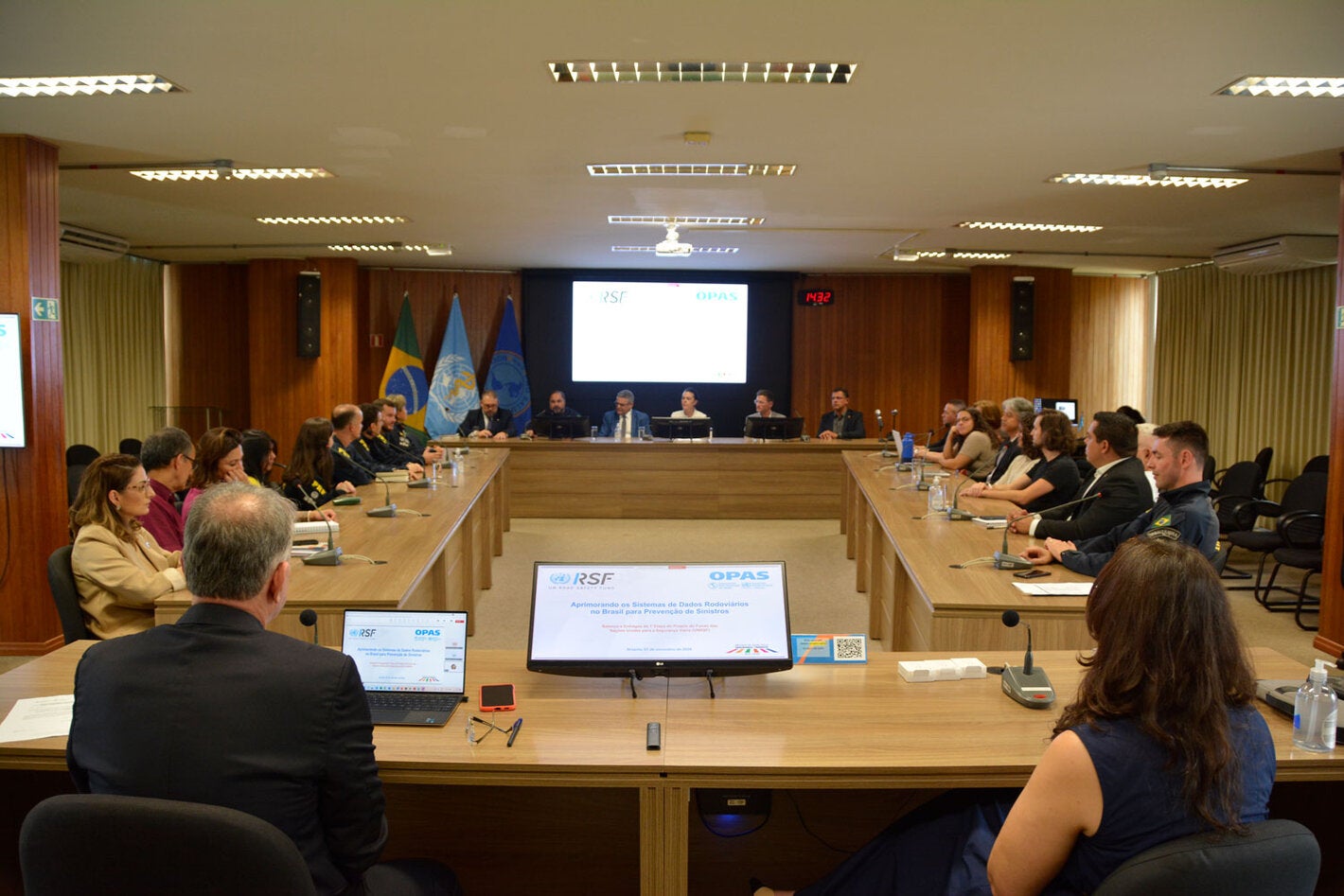
Brasília, November 1, 2024 – On Friday, a meeting was held to present the initial results of the Project “Improving Road Data Systems in Brazil”, bringing together the main partners and coordinators of the initiative. The meeting allowed for a review of the commitments made, the progress achieved, the challenges faced, and the solutions found, in addition to discussing the next steps.
The project, funded by the United Nations Road Safety Fund (UNRSF), is coordinated by the Pan American Health Organization (PAHO/WHO in Brazil), with the Federal Highway Police (PRF), the National Department of Transport Infrastructure (DNIT), the National Traffic Secretariat (Senatran) and the University of Brasília (UnB) as implementing partners. The main objective is to support the implementation of proactive countermeasures in federal road infrastructure through the development of an interoperable system for collecting and analysing data on risk factors. The system is also expected to be shared, increasing its impact on the safety of state and municipal highways in the country.
The first phase of the project, carried out between March and October 2024, included the formation of teams from the participating agencies, the holding of three in-person training workshops, interspersed with weekly virtual meetings, and a field operation. The workshops enabled the team to be levelled based on guided discussions on road safety and the exchange of experiences based on the analysis of practices safety measures already adopted. An analysis of the organizational structures of the participating agencies was also carried out to identify the current processes related to safety actions.
The field operation improved the understanding of risk factor collection processes as well as team integration. Finally, the working groups conducted surveys and analyses of technical and scientific materials that resulted in a support library and the products delivered in this stage, such as the analysis of the crash data collection procedure and the conceptual model of the integrated system.
In addition to presenting the results of the first stage of the project to the directors of the implementing institutions, the meeting served as a way for the technical team itself, present at the event, to understand the progress made so far, as well as to review the strategies for the next activities, based on the assessment carried out.
The event was opened by the coordinator of Traffic Fines and Education of the National Department of Transportation Infrastructure (DNIT), Julio Pellizzon; the general coordinator of Systems, Information and Statistics of Senatran, Pedro Barbosa; the Road Regulation Manager of the Road Infrastructure Superintendence of the National Land Transportation Agency (ANTT), Fernando Feitosa; PRF Operations Director, Marcus Vinicius Silva de Almeida; Chief of Staff of the UnB Rectorate, Paulo Cesar Marques; General Coordinator of Surveillance and Prevention of Violence and Accidents and Promotion of a Culture of Peace at the Brazilian Ministry of Health, Naiza Bandeira de Sá; the Deputy Representative of the PAHO/ WHO Office in Brazil, Elisa Prieto; the Professor and Technical Coordinator of the Project, Michelle Andrade; and the Technical Officer for Road Safety and Injury Prevention of PAHO/WHO in Brazil, the General Coordinator of the Project, Victor Pavarino, among other authorities.
The current situation of road safety in the country demonstrates the importance of these efforts. According to the most recent data from the Brazilian Ministry of Health, the country recorded 33,894 deaths resulting from road traffic crashes in 2022. In addition to the lives lost, road traffic injuries lead to serious injuries and after-effects, causing suffering, causing disabilities, burdening health services and generating loss of productivity.
For PAHO, strengthening road safety is a priority. The organization has supported Brazil and other countries in the Americas in developing policies aimed at reducing road traffic injuries, improving laws and promoting safer and more sustainable mobility.



